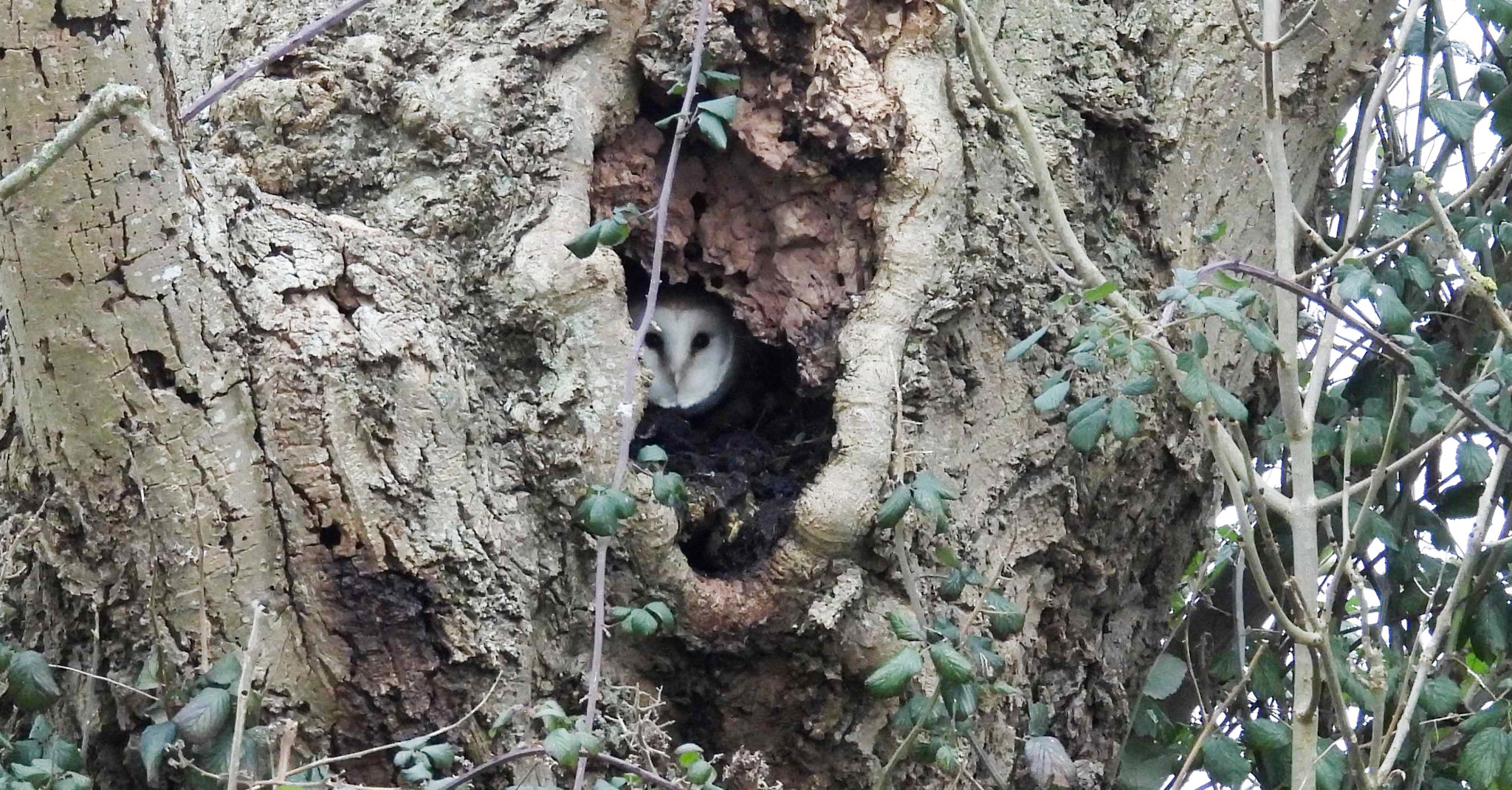'Owl'more

Here at Elmore, our rewilded corners and ancient woodlands are shared with some truly extraordinary creatures, among them, the owl. Silent, stealthy, and wrapped in centuries of myth, owls have long captured the human imagination. But beyond their ghostly charm and folklore, they are vital players in our ecosystems and, like many other species, they’re quietly disappearing.
So today, on Owl Awareness Day, we’re taking a moment to celebrate these remarkable birds. Whether glimpsed at dusk or heard calling from the treetops, they remain some of our most enchanting and essential neighbours. From barn owls gliding over our fields to elusive little owls tucked into old hollows, here’s a closer look at the owls of Elmore…
Barn Owls – Ghosts of the Grasslands
The most iconic of our owl species, barn owls are regulars on our rewilding land, if you know where (and when) to look. With their pale feathers and heart-shaped faces, they drift low over meadows at dusk, hunting silently for mice, voles, and shrews. Their flight is so quiet that even sensitive microphones can’t detect it.
Barn owls suffered greatly from pesticide use in the 20th century, especially DDT, as their survival depends on healthy farmland prey. Thankfully, they’re making a comeback in places like Elmore, where chemical-free fields and abundant tree hollows provide safe spaces to nest and hunt.
Despite their ethereal beauty, barn owls are among the most widespread birds on Earth, found on every continent except Antarctica. Yet even these global wanderers are vulnerable, facing ongoing threats from habitat loss and declining food sources.
Little Owls – Small, Bold, and Hard to Spot
Not native to the UK but now firmly established, Little Owls (Athene noctua) are Elmore’s mischievous residents, compact, fierce, and endlessly curious. Introduced in the 1840s by an eccentric naturalist to control pests, they’ve found a niche in the British countryside with minimal disruption.
Thanks to regular bird surveys carried out by our brilliant local experts, we know at least two call Elmore home. One lives near Windmill Hill and was last seen in March pulling off a daring escape from a sparrowhawk!
These owls are trickier to locate than you'd expect. Not only are they masters of camouflage, but they’re also ventriloquists, throwing their calls so cleverly that they often sound much farther away than they really are. If you’re lucky, you might spot one basking in the sun, peering out from a tree hollow like a watchful little sentinel.
Sadly, Little Owls are in serious decline. The British Trust for Ornithology has recorded a 65% drop in UK numbers over the past 25 years. Modern farming, pollution, and environmental change are all likely to blame. Their decline, despite being species that live closely alongside humans, is a quiet warning about the fragility of our ecosystems.
Tawny Owls – Voices of the Night
The Tawny Owl is perhaps the most iconic voice of the British night. That classic “too-wit, too-woo” call from the movies? That’s them, or rather, a duet: the female calls “too-wit,” and the male replies with “too-woo.”
Unlike barn or little owls, Tawny Owls are fully nocturnal and prefer the cover of dense woodlands. Their rounded wings allow for agile flight between trees, making them elusive to the eye, but not the ear. Though rarely seen at Elmore, they’re often heard, their calls a haunting reassurance that they’re still among us.
Tawnies are actually the UK’s most common owl, but even they rely on healthy woodlands and hollowed trees for nesting, resources that are increasingly under threat.
Why Owls Matter — And Why They Need Us
Owls are far more than mysterious silhouettes in the twilight. They’re top predators, natural pest controllers, and vital indicators of ecological health. Yet around the world, they’re under threat, rom habitat destruction and pollution to climate change and poisoned food chains.
That’s why our rewilding efforts at Elmore matter. Pesticide-free meadows, thriving rodent populations, and old trees left to decay naturally create the perfect habitat for owls to feed, nest, and flourish. And the better we care for this land, the more owls, and other wildlife, we’ll welcome.
Elmore has long been a place where humans and nature coexist. Now, we’re working to tip the balance even more in favour of nature. In doing so, we hope not only to protect the owls already here but to make space for more to return.
So, on this Owl Awareness Day, we honour the ones we’re lucky enough to hear or glimpse... and quietly hope for more wings at dusk.
If you're staying in one of our treehouses, keep your ears tuned and your eyes peeled, sightings are not uncommon.


